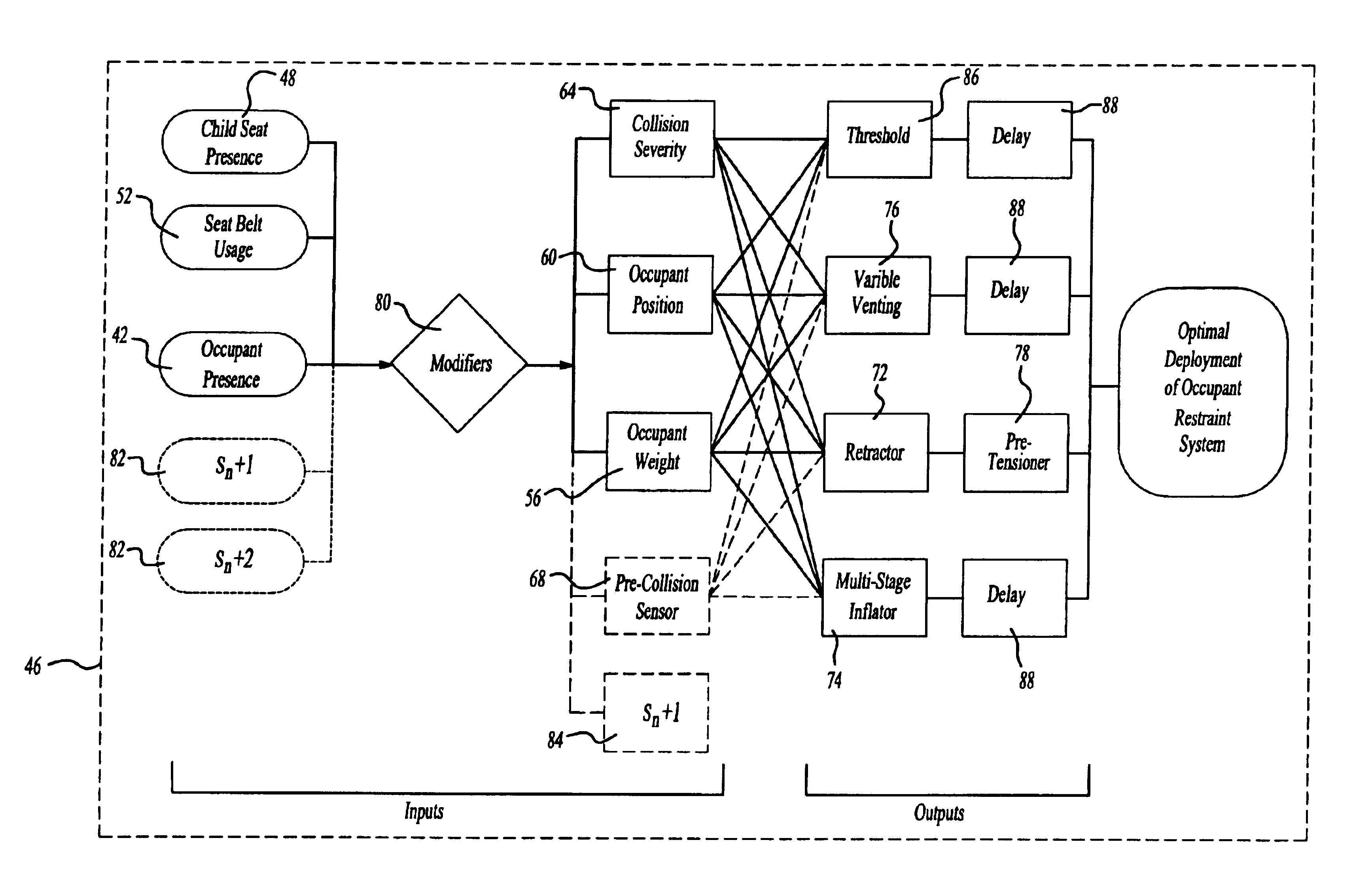Controller for occupant restraint system
a technology for occupant restraints and controllers, which is applied in the direction of process control, process control, and pedestrian/occupant safety arrangements, etc. it can solve the problems of reducing the likelihood of serious injury for the occupants, system often does not consider other important, and system does not utilize multiple outputs to control both the airbag deployment and the sea
- Summary
- Abstract
- Description
- Claims
- Application Information
AI Technical Summary
Problems solved by technology
Method used
Image
Examples
Embodiment Construction
A vehicle is shown generally at 10 in FIG. 1 with an occupant 12 seated in a seat having a seat back 14 supported with respect to a seat bottom 16. The vehicle is equipped with an occupant restraint system that includes an airbag system 18 and a seat belt system 20 that are used to restrain occupants 12 within the vehicle 10 under certain predetermined deceleration requirements. If the vehicle decelerates suddenly, such as when a collision occurs, occupants 12 will tend to continue to move forward due to inertial effects. An airbag controller 22 deploys an airbag 24 under predetermined collision circumstances to decelerate the occupants' impact speed before they contact a vehicle structure, such as a steering wheel or dashboard 26.
The seat belt system 20, shown in FIG. 2, typically includes a lap belt portion 28 and a harness portion 30 that are fastened with a buckle 32 to secure the occupant 12 in the seat. The seat belt system 20 also includes a pretensioner mechanism 34 that pro...
PUM
 Login to View More
Login to View More Abstract
Description
Claims
Application Information
 Login to View More
Login to View More - R&D
- Intellectual Property
- Life Sciences
- Materials
- Tech Scout
- Unparalleled Data Quality
- Higher Quality Content
- 60% Fewer Hallucinations
Browse by: Latest US Patents, China's latest patents, Technical Efficacy Thesaurus, Application Domain, Technology Topic, Popular Technical Reports.
© 2025 PatSnap. All rights reserved.Legal|Privacy policy|Modern Slavery Act Transparency Statement|Sitemap|About US| Contact US: help@patsnap.com



